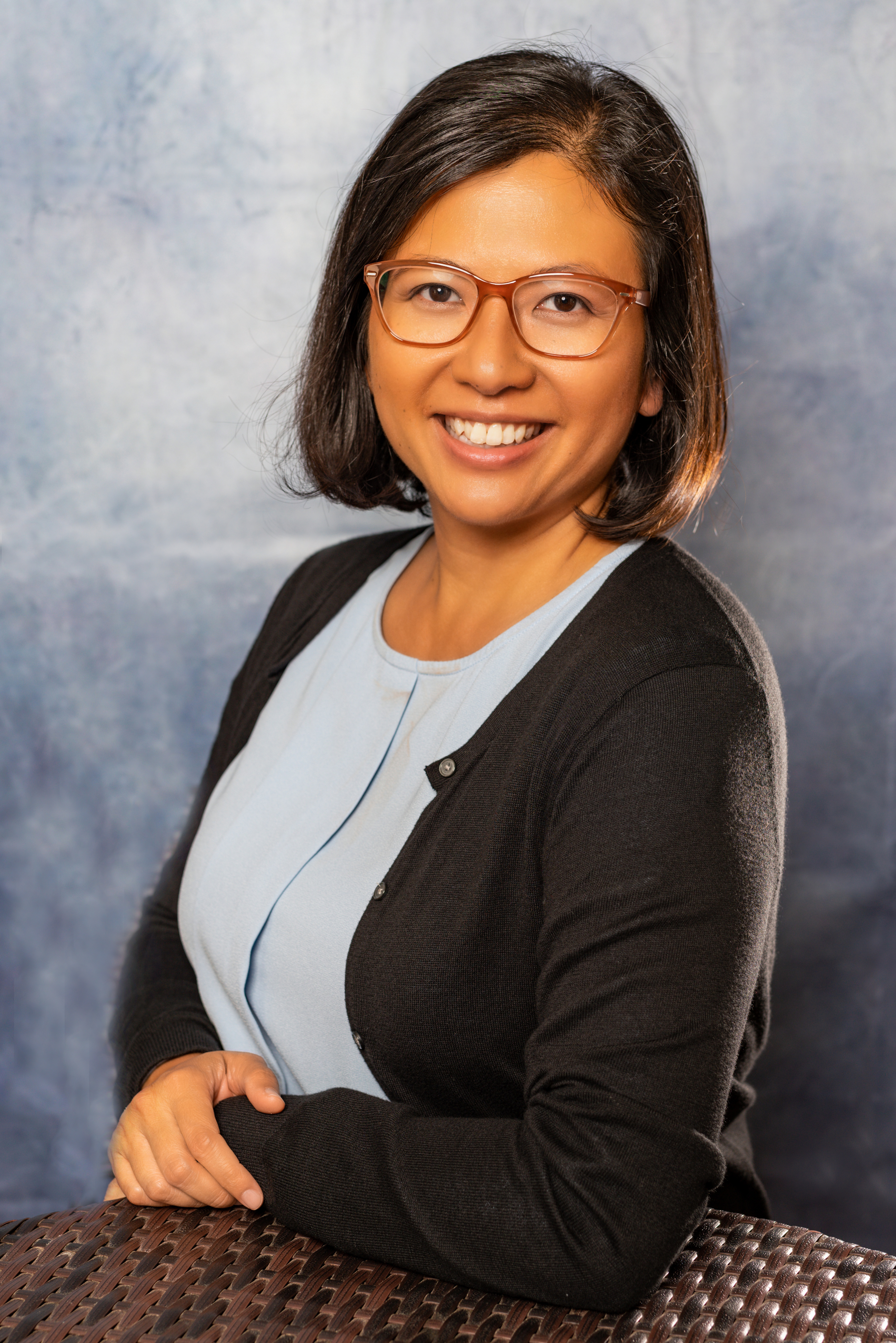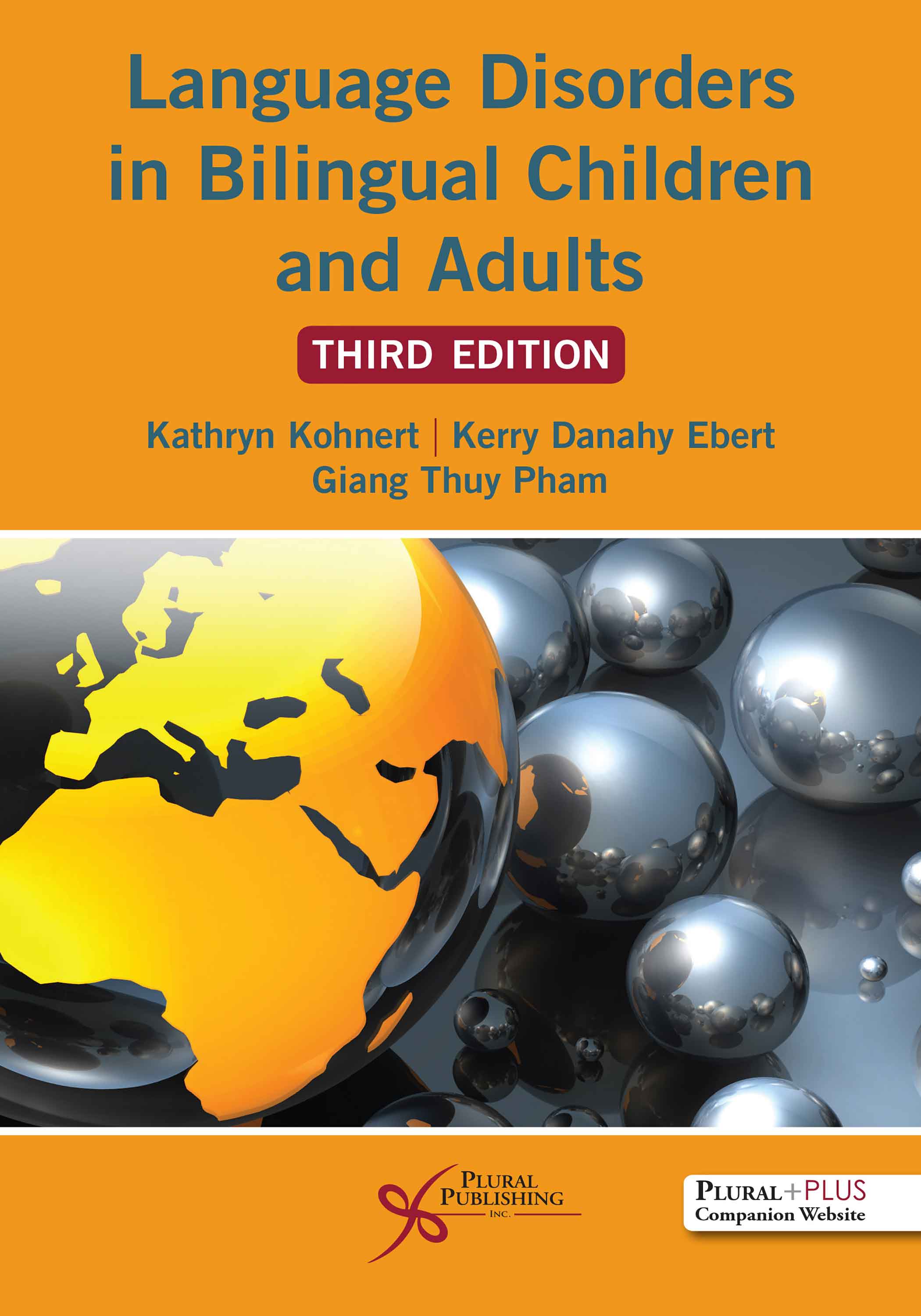
Language Disorders in Bilingual Children and Adults
Third Edition
Kathryn Kohnert, Kerry Danahy Ebert, Giang Thuy Pham
Details: 375 pages, B&W, Softcover, 6" x 9"
ISBN13: 978-1-63550-189-6
© 2022 | Available
For Instructors
Purchase
Language Disorders in Bilingual Children and Adults, Third Edition, provides speech-language pathologists, advanced students in communication disorders programs, and clinical language researchers with information needed to formulate and respond to questions related to effective service delivery to bilingual children and adults with suspected or confirmed language disorders. The bilinguals of interest represent varying levels of first and second language proficiency across the lifespan. That is, bilingualism is not determined here by proficiency in each language, but rather by the individual's experience or need for two languages.
In separate chapters, the book synthesizes the literature on bilingual children and adults with typical and atypical language skills. These chapters give the reader a deep understanding of the multiple factors that affect language development and disorders in those who rely on two languages for meaningful interactions. Chapters on assessment and intervention issues and methods are then presented for each population.
For children, the text focuses on developmental language disorder but also discusses secondary language disorders (such as autism spectrum disorder) in bilingual populations. For adults, the focus is on aphasia, with additional discussion of dementia, traumatic brain injury, and right hemisphere disorder. Although child and adult, typical and atypical populations are presented separately, all are considered within a unifying Dynamic Interactive Processing perspective and within a new Means-Opportunities-Motives framework for understanding language disorders in bilinguals. This broad theoretical framework emphasizes interactions between social, cognitive, and communicative systems to form the basis for very practical implications related to assessment and intervention.
This third edition has been completely updated to reflect the current research on bilingual populations and the best practices for working with them. Studies at the intersection of bilingualism and language disorders have expanded to include additional disorders and new language combinations. The authors synthesize the current literature and translate it for clinical use.
New to the Third Edition
• Coauthors Kerry Danahy Ebert, PhD, CCC-SLP and Giang Thuy Pham, PhD, CCC-SLP
• Updated literature review and references to reflect new research on bilingualism, cultural competence, cognitive advantages and clinical practice with linguistically diverse populations
• Case studies on assessment with bilingual children and adults
• Additional tables and figures summarizing key information
• Available evidence on additional child and adult language disorders in bilinguals
• Updated extension activities and resource supplement
• A PluralPlus Companion Website with PowerPoint slides for instructors
With its updated content and new features, Language Disorders in Bilingual Children and Adults, Third Edition, is a must-have resource for any SLP who works with bilingual children or adults.
Reviews
"The purpose of the book is to provide the most up-to-date information on the subject of bilingual children and adults and how to differentiate between those that have a language disorder and a language difference. The book's main focus is on the intersection of two populations - bilinguals and those with a language disorder. With an increasing growth in bilinguals and a shortage of bilingual SLPs, this resource is very needed.
The intended audience for this book is speech-language pathologists, graduate students, and clinical researchers, and any other professionals interested in supporting bilingual individuals.
The book is divided into three sections. The first section, entitled "Foundational Issues," covers three chapters that explain different perspectives on bilingualism, language proficiency, cultural competence, and EBP factors. Section 2 is specifically on bilingual children with four chapters, and section 3 is on bilingual adults also covered in four chapters. Each of these sections explains how to adequately and effectively assess and treat bilingual individuals.
As a pediatric SLP, one of my areas of interest is the appropriate and effective assessment of bilingual children. As a professor, I teach about both children and bilingual adults. Having a resource that covers both of these populations is very beneficial. The textbook provides an updated evidence-based approach to serving this population. With a continued growth in bilingual individuals, having a resource that focuses on assessment and treatment is very much needed in the field of speech-language pathology."
—Yvana Uranga-Hernandez, PhD, CCC-SLP, Biola University, in Doody's Reviews (March 2021)
“The 3rd edition of Language Disorders in Bilingual Children and Adults provides an in-depth account of current information for professionals working with paediatric and adult bilingual populations. This edition includes case studies, an updated literature review, references, and extension activities that reflect the current research on bilingualism across the lifespan. It features clear and well-formatted tables and figures that illustrate theories, summarize study findings and provide examples. The book references bilingual populations representing a varied range of language combinations, although much of the literature, statistics, case studies and resources, cultural context and statistics concern the bilingual population and professionals in North America. […]
The book covers a wide breadth of pertinent subject matters within the field of research concerning bilingual children and adults as well as the clinicians and researches that are involved with effective service delivery to bilingual individuals with language disorders. This book’s format follows an organized, methodical and logical order with content covering the lifespan of bilingual populations divided into sections on bilingual children and bilingual adults. […]
Each section contains chapters synthesizing literature on atypical and typical language skills, issues, definitions of key terminology, assessment and intervention for each population. A holistic approach is championed by the authors through The Dynamic Interactive Processing perspective and Means–Opportunities–Motives framework, which are applied and considered across these populations, along with the World Health Organization’s (WHO) International Classification of Functioning, Disability and Health (ICF).
Key discussion points include a focus on the modernization of service delivery and intervention in bilingual populations. The text discusses both well-established conventional and newer methods to overcome clinician–client language mismatch, from the use of interpreters, to parent and caregiver training, peer modelling and support groups involving former, and current clients who share a language. Modernization that capitalizes on the ever-increasing and accessible technology is now well supported by research and encouraged by the authors, such as virtual therapy platforms and computer-based programs to supplement treatment at home between therapy sessions. The relatively recent conversion of paper-based to online-accessible resources can reach a wider number of clinicians worldwide. A useful list of online tools available in various languages is included in the book’s Resource Supplement.
Overall, this edition synthesizes strong existing and updated research relevant to bilingual populations with typical and atypical language skills, whilst integrating recent advances and functional discussions that highlight important implications for best practice.
—Amy L Pearce, Bensham Manor School, in Child Language Teaching and Therapy (2020)
Preface to Third Edition
About the Authors
Acknowledgments
Section I. Foundational Issues
Chapter 1. Perspectives on Language, Bilingualism, and Language Proficiency
Chapter 2. Culture and Clinical Competence in Speech-Language Pathology
Chapter 3. Principles for Clinical Actions: EBP and Common Factors
Section II: Bilingual Children
Chapter 4. Typically Developing Children Learning One or Two Languages
Chapter 5. Developmental Language Disorders in Bilingual Children
Chapter 6. Language Assessment with Developing Bilinguals: Purposes, Principles, and Procedures
Chapter 7. Intervention with Bilingual Children with Language Impairment
Section III: Bilingual Adults
Chapter 8. Language and Cognition in Bilingual Adults
Chapter 9. Bilinguals with Aphasia and Other Acquired Language and Cognitive-Communication Disorders
Chapter 10. Assessment with Bilingual Adults: Giving Meaning to Measures
Chapter 11. Intervention for Bilingual Adults with Aphasia and Other Acquired Language and Cognitive-Communication Disorders
Resource Supplement
Index
Language Disorders in Bilingual Children and Adults, Third Edition comes with access to supplementary instructor materials on a PluralPlus companion website.
To access the instructor materials, you must contact Plural Publishing, Inc. to be verified as an instructor and receive your access code.
Email: instructormaterials@pluralpublishing.com
Tel: 866-758-7251 (toll free) or 858-492-1555
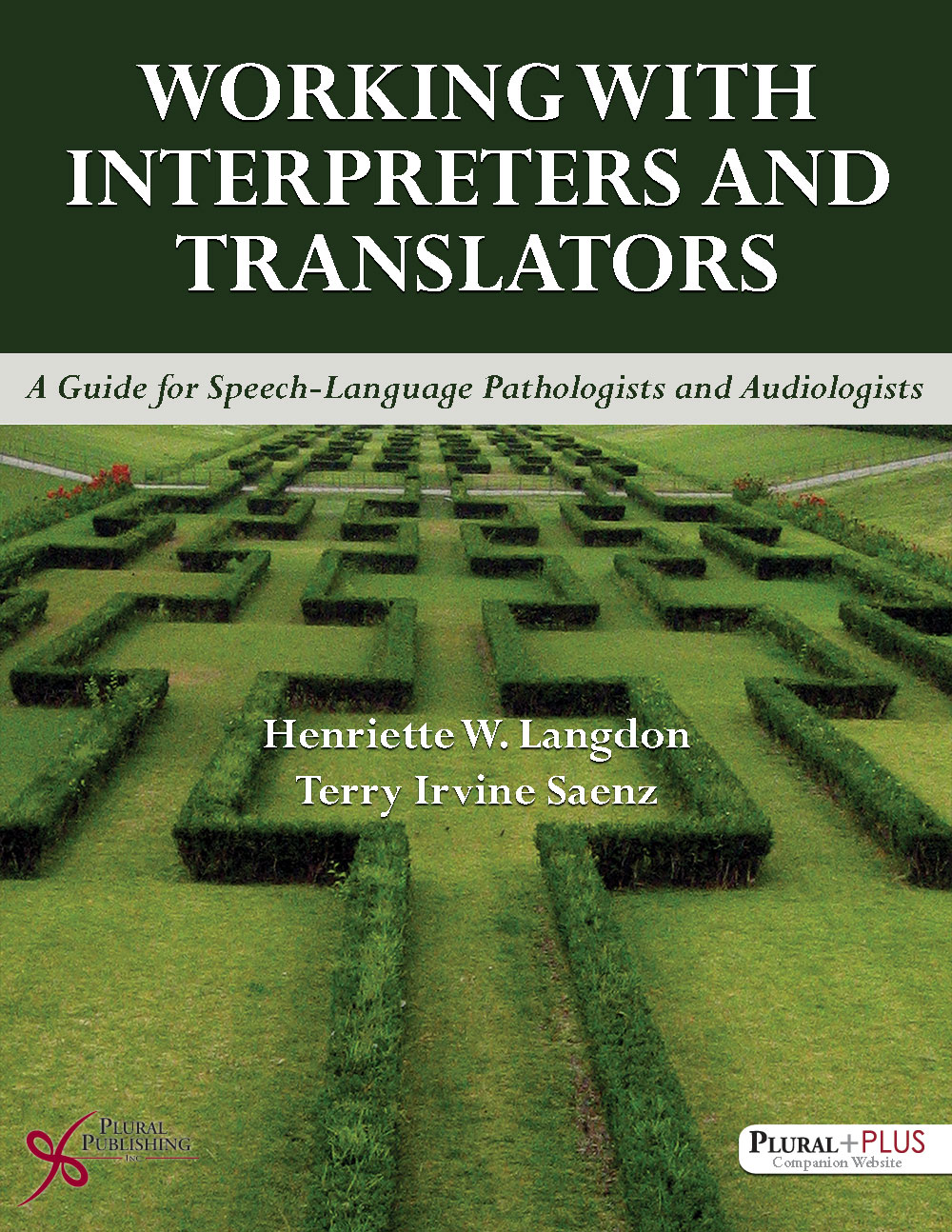
Working with Interpreters and Translators: A Guide for Speech-Language Pathologists and Audiologists
First Edition
Henriette W. Langdon, Terry Irvine Saenz
Details: 267 pages, B&W, Softcover, 7" x 10"
ISBN13: 978-1-59756-611-7
© 2016 | Available
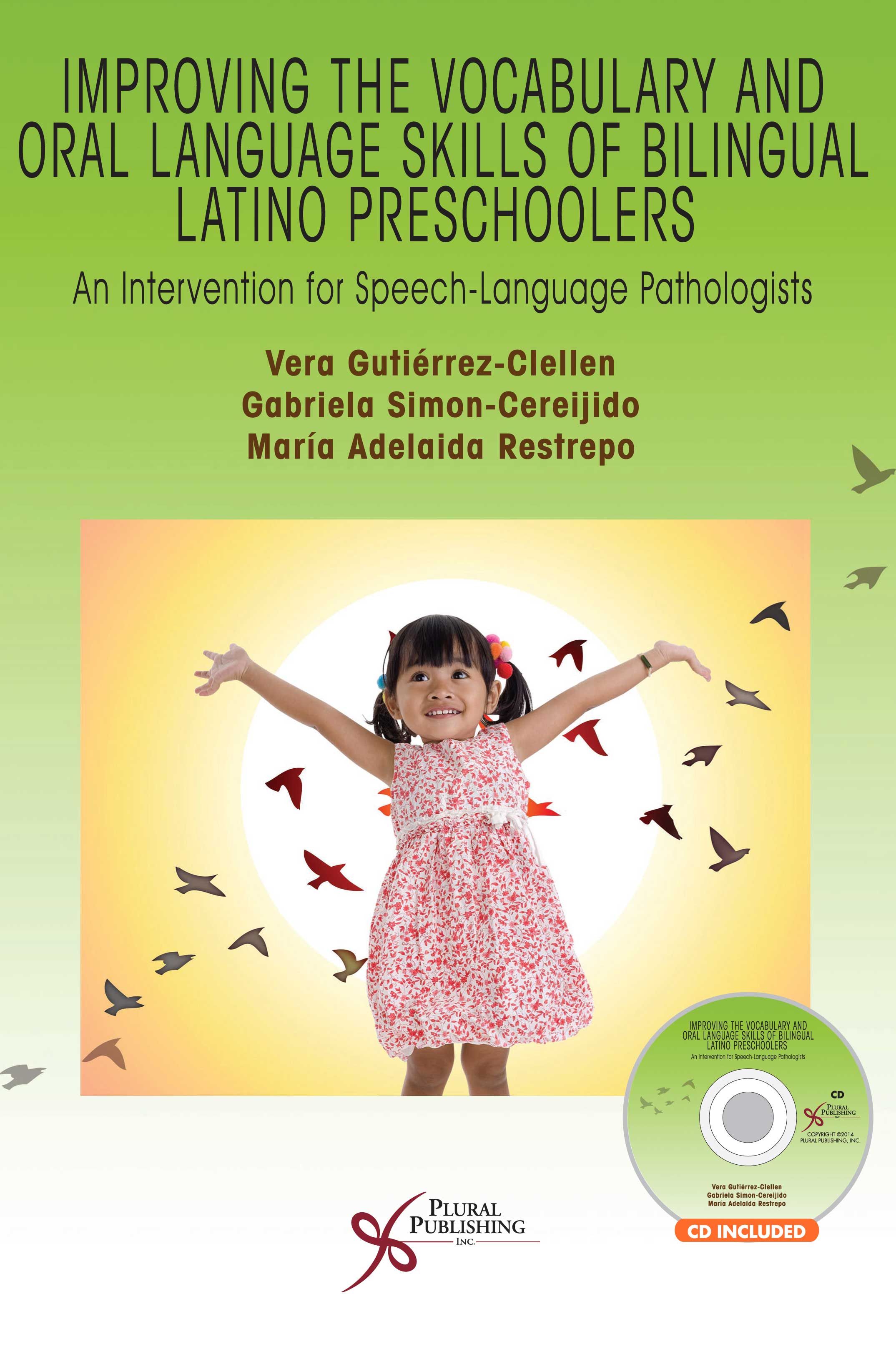
Improving the Vocabulary and Oral Language Skills of Bilingual Latino Preschoolers: An Intervention for Speech-Language Pathologists
First Edition
Vera Gutierrez-Clellen, Gabriela Simon-Cereijido, M. Adelaida Restrepo
Details: 136 pages, B&W, Spiral Bound + CD, 8.5 x 11"
ISBN13: 978-1-59756-519-6
© 2014 | Available
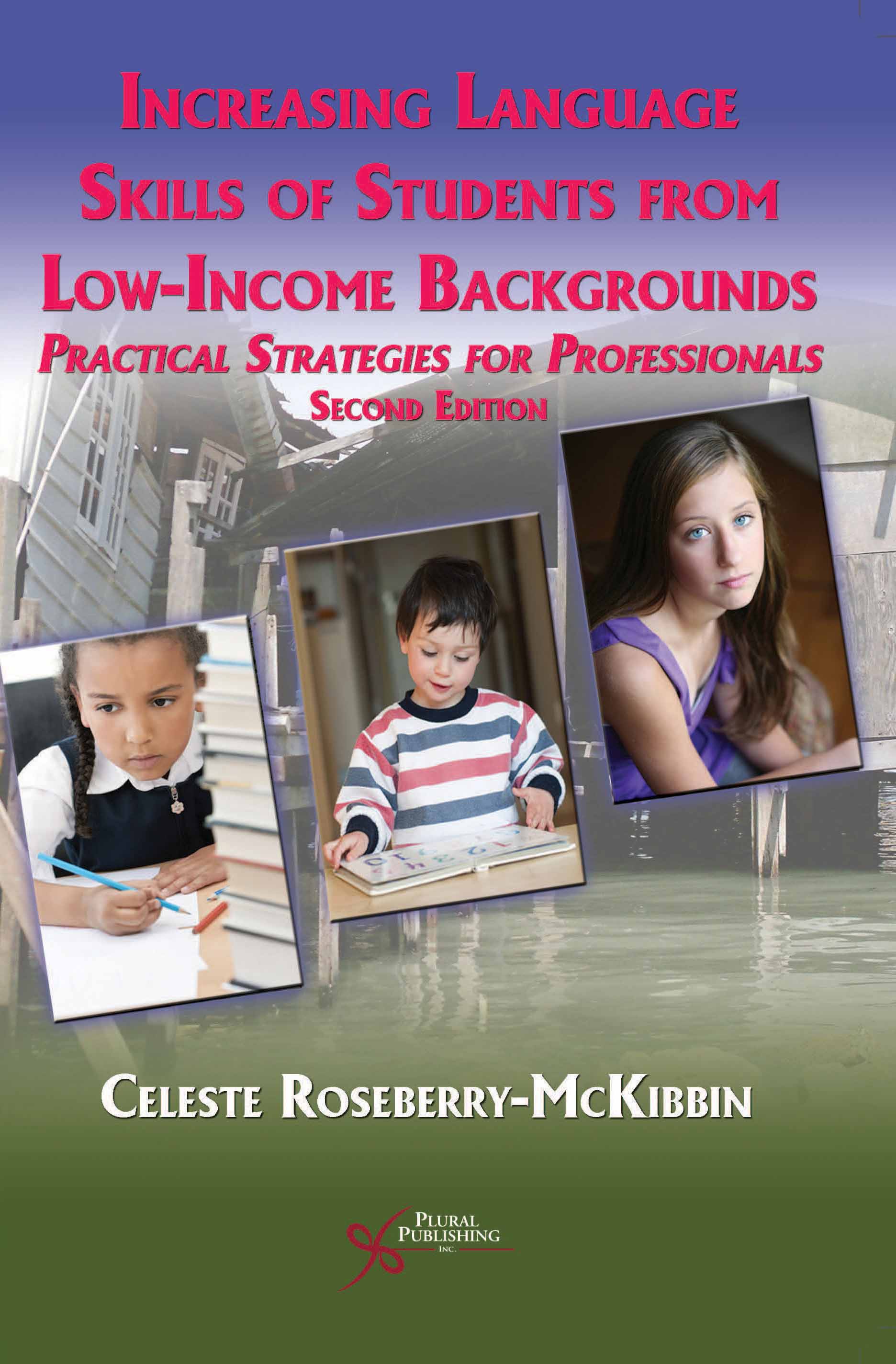
Increasing Language Skills of Students from Low-Income Backgrounds: Practical Strategies for Professionals
Second Edition
Celeste Roseberry-McKibbin
Details: 480 pages, B&W, Softcover, 6" x 9"
ISBN13: 978-1-59756-497-7
© 2013 | Available
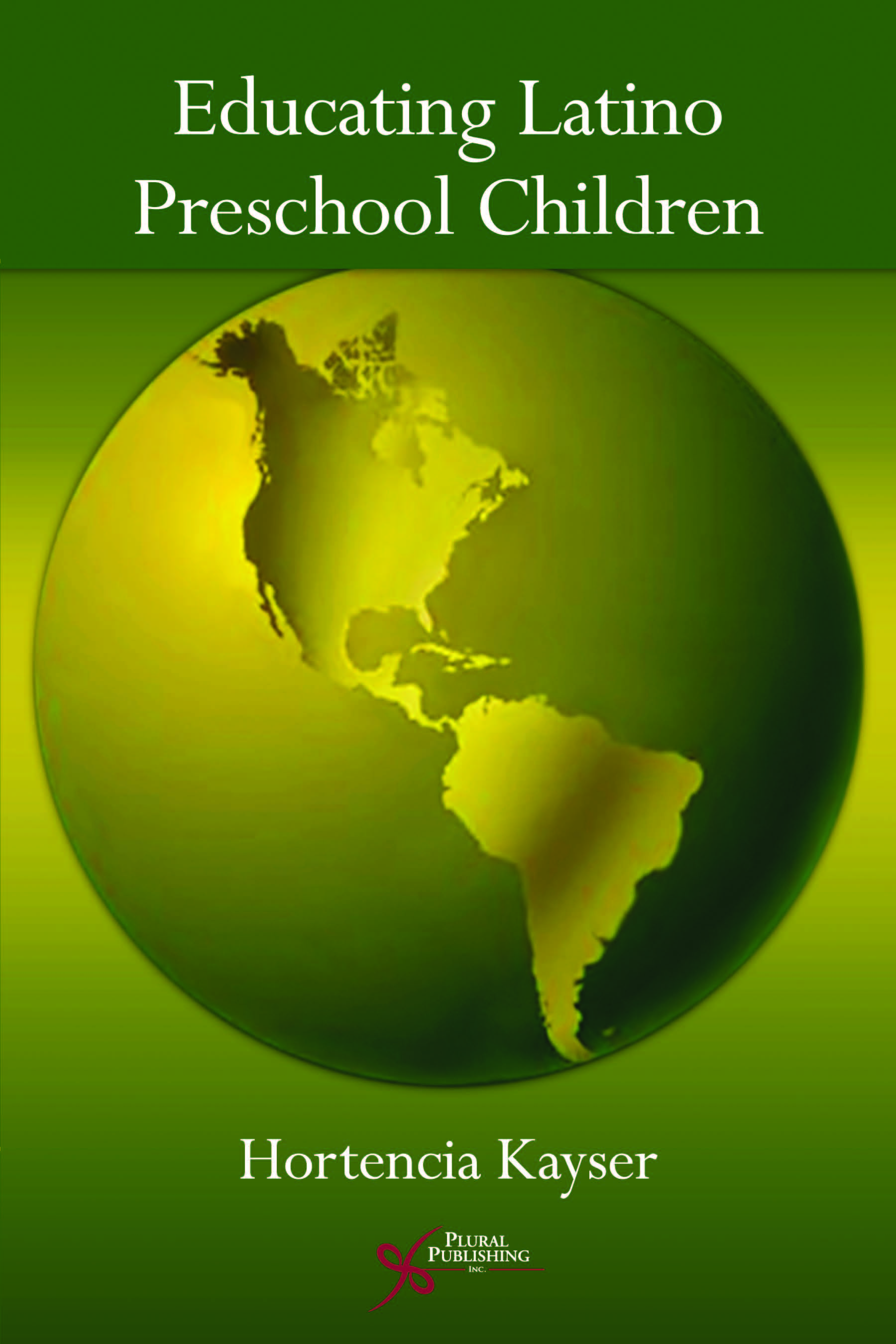
Educating Latino Preschool Children
First Edition
Hortencia Kayser
Details: 232 pages, B&W, Softcover, 6" x 9"
ISBN13: 978-1-59756-121-1
© 2009 | Available
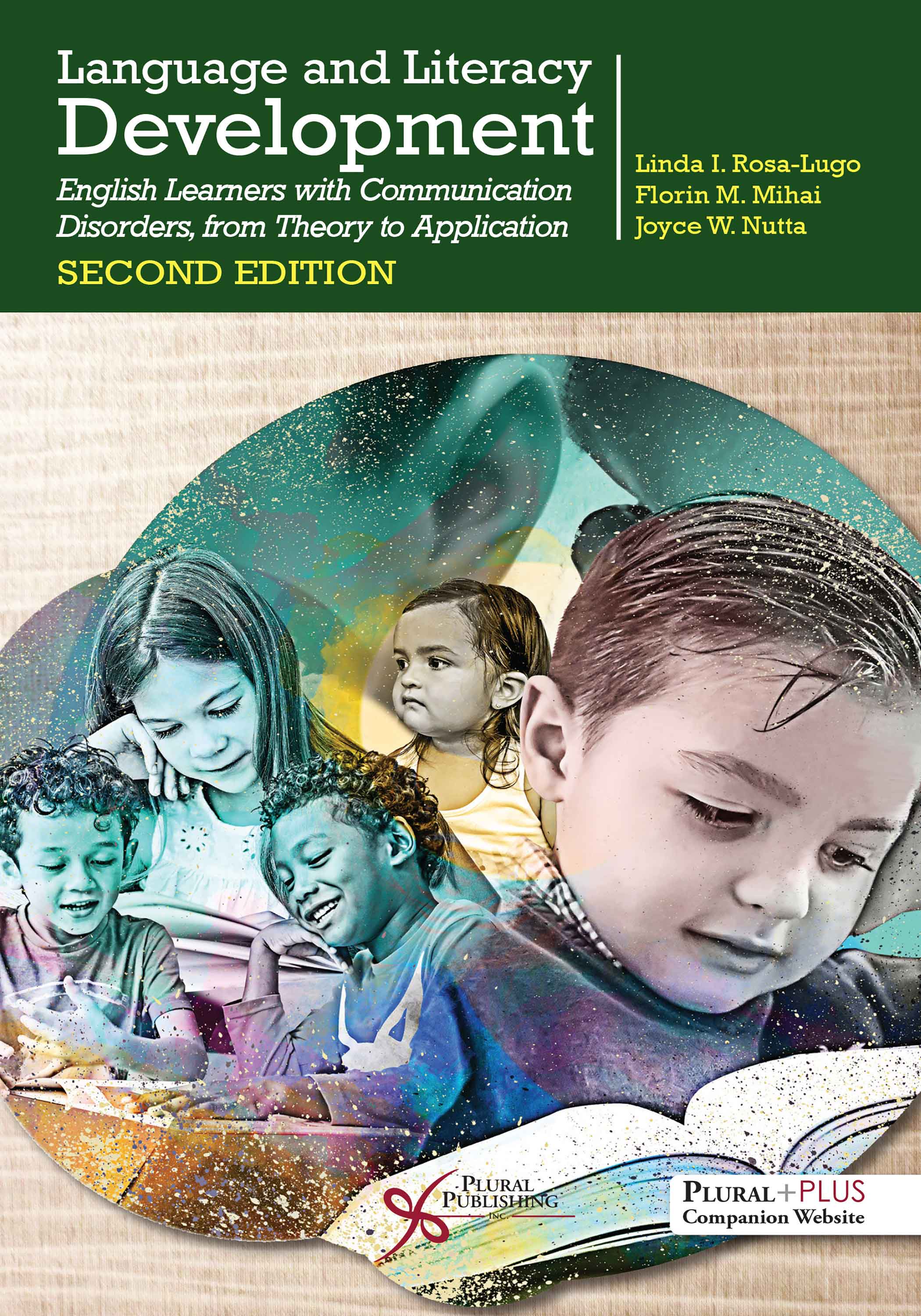
Language and Literacy Development: English Learners with Communication Disorders, From Theory to Application
Second Edition
Linda I. Rosa-Lugo, Florin Mihai, Joyce W. Nutta
Details: 432 pages, B&W, Softcover, 6" x 9"
ISBN13: 978-1-63550-153-7
© 2020 | Available
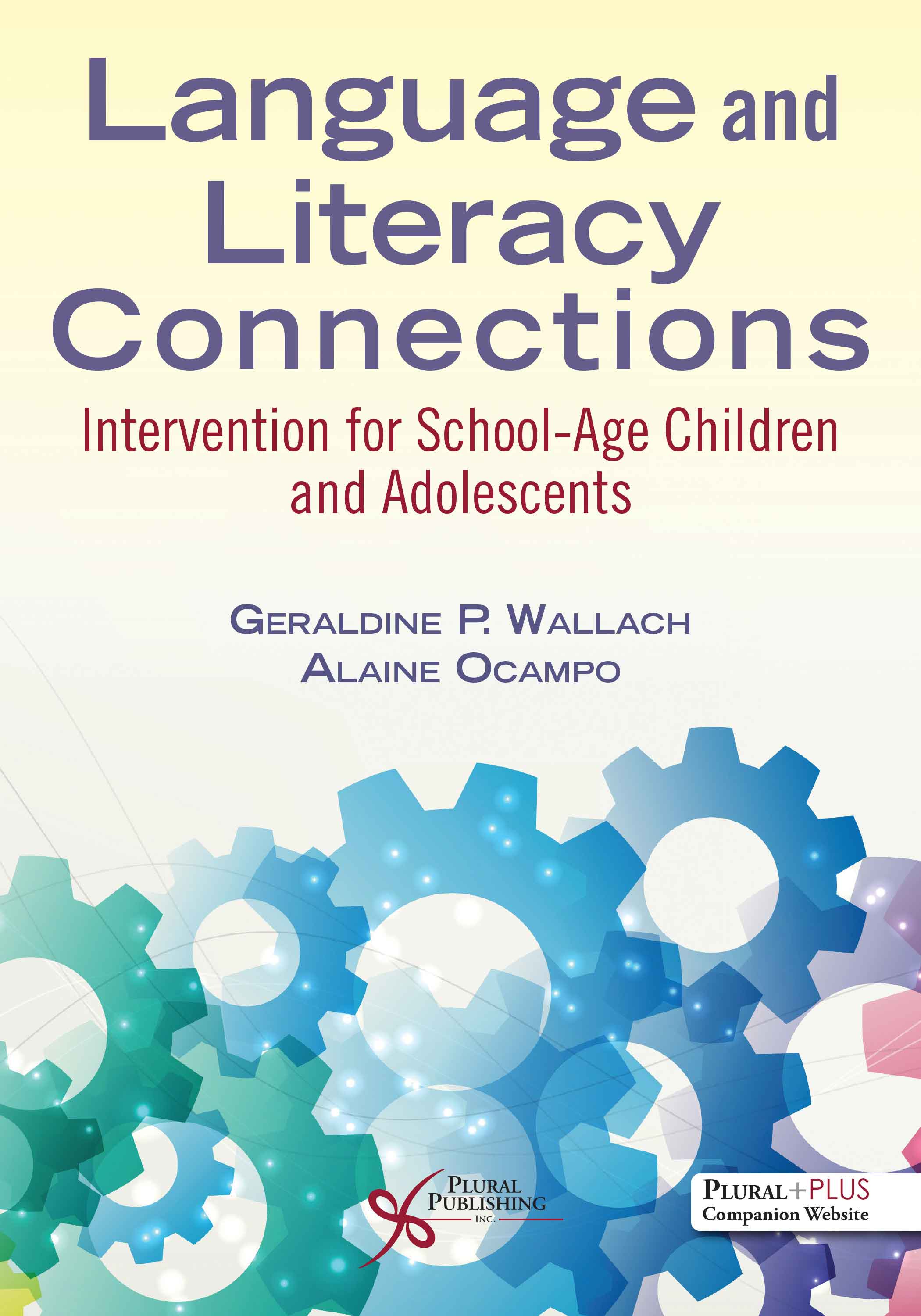
Language and Literacy Connections: Intervention for School-Age Children and Adolescents.
First Edition
Geraldine P. Wallach, Alaine Ocampo
Details: 358 pages, B&W, Softcover, 7" x 10"
ISBN13: 978-1-63550-213-8
© 2022 | Available
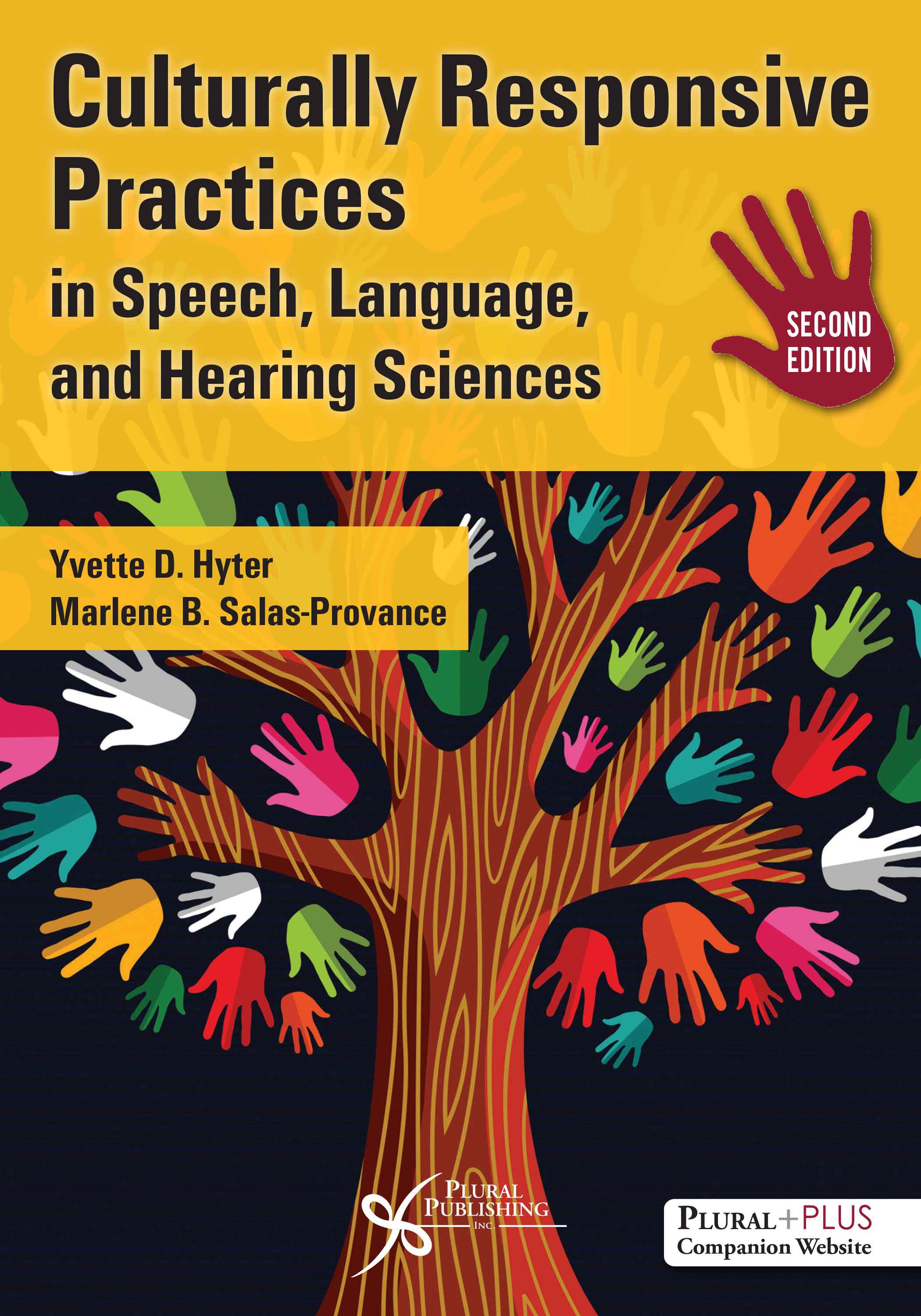
Culturally Responsive Practices in Speech, Language, and Hearing Sciences
Second Edition
Yvette D. Hyter, Marlene B. Salas-Provance
Details: 448 pages, B&W, Softcover, 7" x 10"
ISBN13: 978-1-63550-650-1
© 2023 | Available
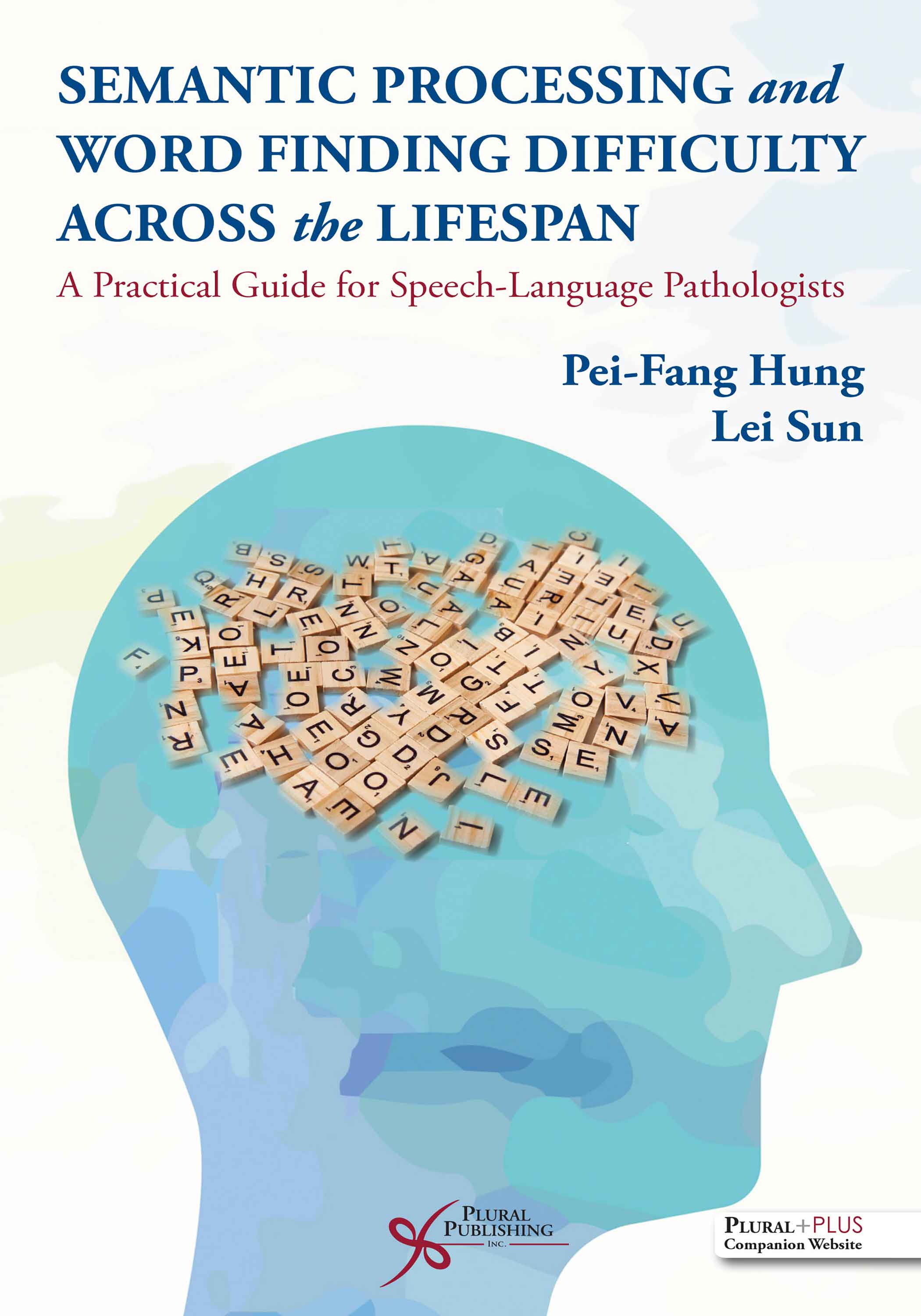
Semantic Processing and Word Finding Difficulty Across the Lifespan: A Practical Guide for Speech-Language Pathologists
First Edition
Pei-Fang Hung, Lei Sun
Details: 452 pages, B&W, Softcover, 6" x 9"
ISBN13: 978-1-63550-194-0
© 2022 | Available
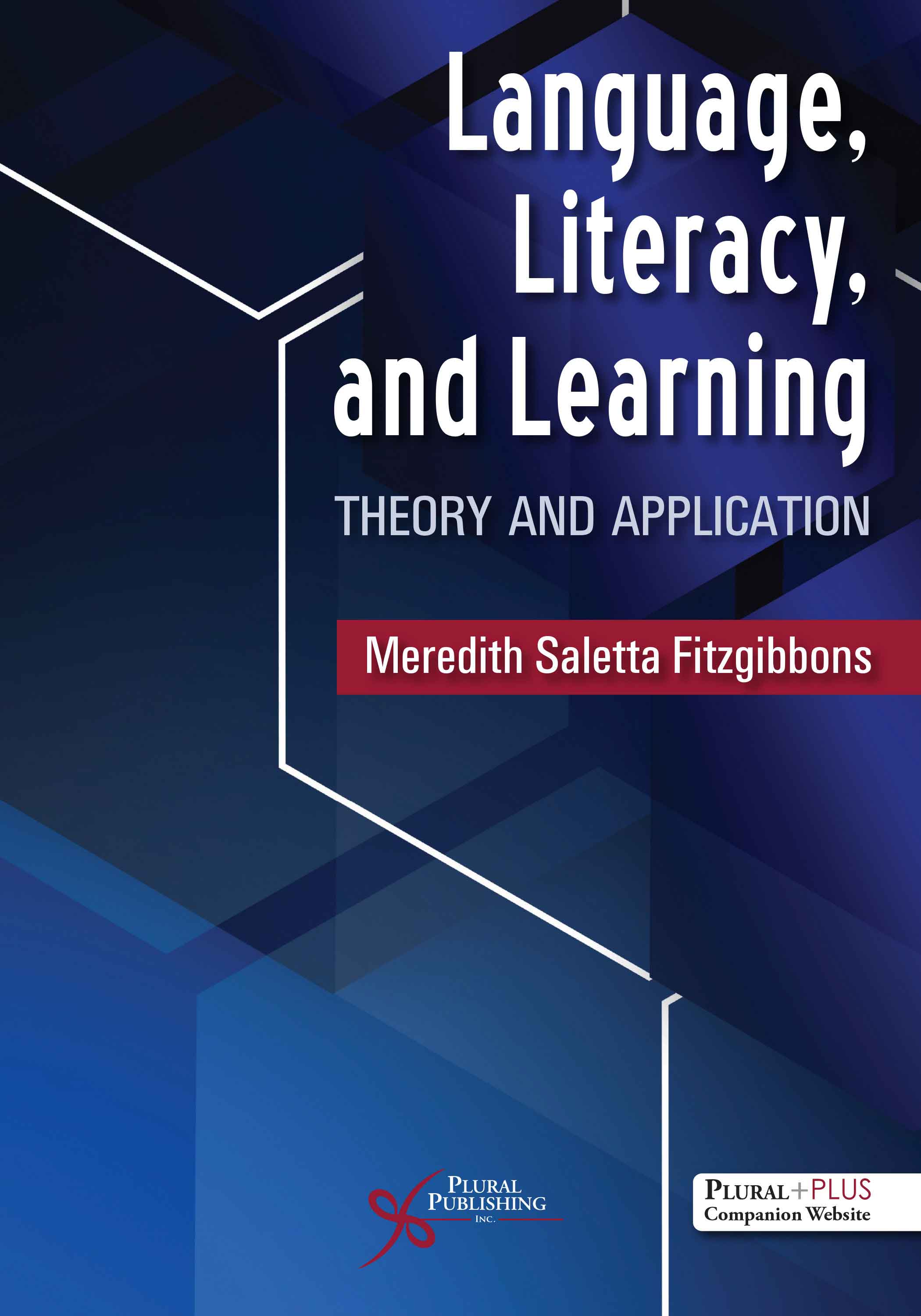
Language, Literacy, and Learning: Theory and Application
First Edition
Meredith Saletta Fitzgibbons
Details: 329 pages, B&W, Softcover, 7" x 10"
ISBN13: 978-1-63550-361-6
© 2024 | Available
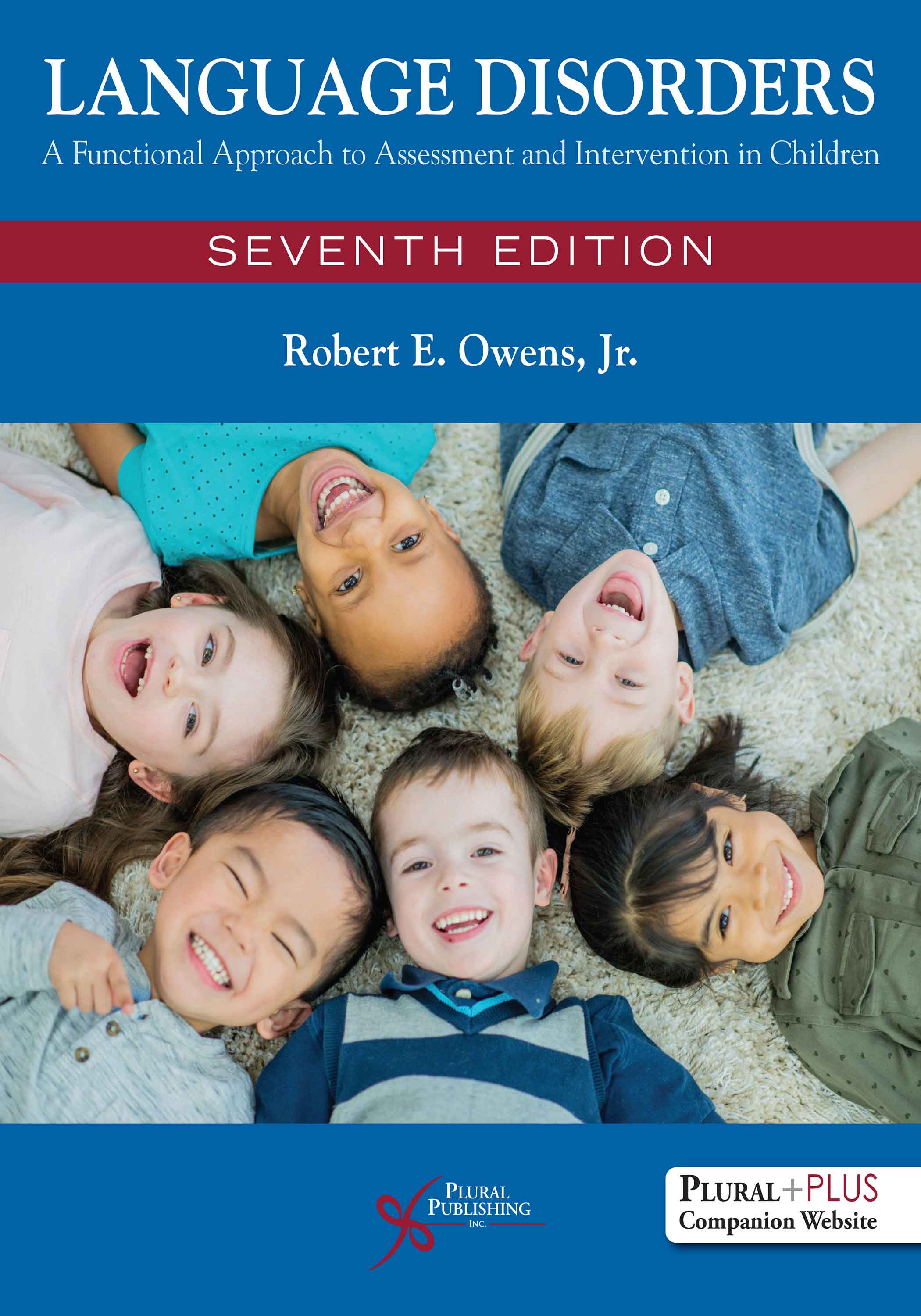
Language Disorders: A Functional Approach to Assessment and Intervention in Children
Seventh Edition
Robert E. Owens, Jr.
Details: 759 pages, 2-Color, Softcover, 8.5" x 11"
ISBN13: 978-1-63550-413-2
© 2024 | Available



